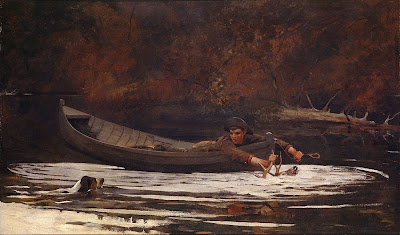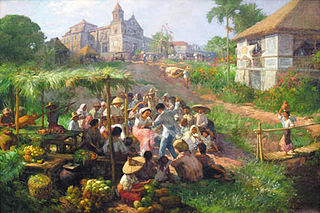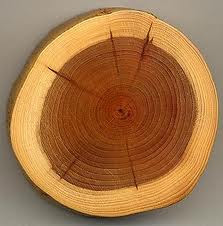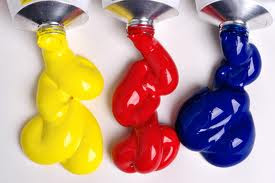Painting is the process of applying color to a surface using tools such as a brush, a painting knife, a roller, or even fingers.
Example materials:
- Canvas
Canvas is an extremely heavy-duty plain-woven fabric used for making sails, tents, marquees, backpacks,
and other items for which sturdiness is required. It is also popularly
used by artists as a painting surface, typically stretched across a
wooden frame. It is also used in such fashion objects as handbags and
shoes.
For more details visit:
- Paper
Paper is a thin material mainly used for writing upon, printing upon, drawing or for packaging. It is produced by pressing together moist fibers, typically cellulose pulp derived from wood, rags or grasses, and drying them into flexible sheets.
Paper is a versatile material with many uses. Whilst the most common
is for writing and printing upon, it is also widely used as a packaging
material, in many cleaning products, in a number of industrial and construction processes, and even as a food ingredient – particularly in Asian cultures.
For more details visit:
- Wood
Wood is a hard, fibrous tissue found in many trees. It has been used for hundreds of thousands of years for both fuel and as a construction material. It is an organic material, a natural composite of cellulose fibers
(which are strong in tension) embedded in a matrix of lignin which
resists compression. Wood is sometimes defined as only the secondary xylem in the stems of trees,
or it is defined more broadly to include the same type of tissue
elsewhere such as in tree roots or in other plants such as shrubs.
For more details visit:
http://en.wikipedia.org/wiki/Wood
You can see the image below how Winslow Homer has created two images that are exactly alike.
Observe, Think, Develop your perception:
The images you see in these two works by Winslow Homer are most exactly alike .The difference is that one is painted with thin, wet, flowing water-color paint while other is painted with thick, creamy oil paint. Can you describe the different effects these two materials have on the same subject?
 | |||||||||||||
| Winslow Homer Sketch for "Hound and Hunter", 1892 Gift of Ruth K. Henschel in memory of her husband, Charles R. Henschel 1975.92.7 |
 |
| Winslow Homer Hound and Hunter , 1892 oil on canvas 28-1/4 x 48-1/8 inches (71.8 x 122.3 cm) from the exhibition, Winslow Homer in the National Gallery of Art, July 3, 2005 - Feb. 20, 2006 image courtesy National Gallery of Art, Washington, D.C. |
Meet the Artist:
Winslow Homer
American, 1836 - 1910
Winslow Homer was born in Boston, Massachusetts, in 1836, the second
of the three children, all sons, of Henrietta Benson and Charles Savage
Homer.
His artistic education consisted chiefly of his apprenticeship
to the Boston commercial lithographer John H. Bufford, and a few lessons
in painting from Frédéric Rondel after that. Following his
apprenticeship, Homer worked as a free-lance illustrator for such
magazines as Harper's Weekly.
For more details visit:
http://www.nga.gov/cgi-bin/tbio?tperson=1401&type=a
http://en.wikipedia.org/wiki/Winslow_Homer
All paints have three basic ingredients. These are:
- Pigment
A pigment is a material that changes the color of reflected or transmitted light as the result of wavelength-selective absorption. This physical process differs from fluorescence, phosphorescence, and other forms of luminescence, in which a material emits light. Many materials selectively absorb certain wavelengths
of light. Materials that humans have chosen and developed for use as
pigments usually have special properties that make them ideal for
coloring other materials. A pigment must have a high tinting strength relative to the materials it colors. It must be stable in solid form at ambient temperatures.
For more details visit: http://en.wikipedia.org/wiki/Pigment
- Binder
The binder is a paint is the substance used to hold together (bind) the
pigment, to transform the dry granules of pigment into the paste we know
as paint. It also makes the paint stick to whatever it's painted on.
For more details visit:
http://painting.about.com/od/artglossaryb/g/defbinder.htm
- Solvent

A solvent (from the Latin solvō, “I loosen, untie, I solve”) is a liquid, solid, or gas that dissolves another solid, liquid, or gaseous solute, resulting in a solution that is soluble in a certain volume of solvent at a specified temperature. Common uses for organic solvents are in dry cleaning (e.g., tetrachloroethylene), as a paint thinner (e.g., toluene, turpentine), as nail polish removers and glue solvents (acetone, methyl acetate, ethyl acetate), in spot removers (e.g., hexane, petrol ether), in detergents (citrus terpenes), in perfumes (ethanol), nail polish and in chemical synthesis. The use of inorganic solvents (other than water) is typically limited to research chemistry and some technological processes.
The global solvent market is expected to earn revenues of about US$33
billion in 2019. Especially the dynamic economic development in emerging
markets like China, India, Brazil, or Russia
will continue to boost demand for solvents. Specialists expect the
worldwide solvent consumption to increase at an average annual rate of
2.5% over the next years. Accordingly, the growth rate seen during past
eight years will be surpassed.
For more details visit:
ON THE SHELF: Tatak Pinoy Paintings( from various artists)
Fernando Amorsolo y Cueto's Artwork
Fernando Amorsolo y Cueto's Artwork
 |
| Fruit Gatherer, 1950. Oil on artist's board. A specimen of Amorsolo's conception of an ideal Filipina beauty. It also depicts his mastery of realism, impressionism and the use of “Chiaroscuro”. |
 |
| Antipolo by Fernando Amorsolo, depicting Filipinos celebrating a town fiesta. |
Meet the Artist:
Fernando Amorsolo y Cueto (May 30, 1892 – April 24, 1972) is one of the most important artists in the history of painting in the Philippines. Amorsolo was a portraitist and painter of rural Philippine landscapes.
He is popularly known for his craftsmanship and mastery in the use of
light. Born in Paco, Manila, he earned a degree from the Liceo de Manila Art School in 1909.
For more details visit:
Pacita Abad's Artwork
 |
| Ati-Atihan (1983). Acrylic on stitched and padded canvass. |
 |
| Filipina: A racial identity crisis (1990). Acrylic, handwoven cloth, dyed yarn, beads, gold thread on stitched and padded canvass. |

Meet the Artist:
Pacita Abad (1946-2004) was born in Basco, Batanes, a small island in the northernmost part of the Philippines,
between Luzon and Taiwan. Her more-than-thirty-year painting career
began when she travelled to the United States to undertake graduate
studies. She had over 40 solo exhibitions at museums and galleries in
the U.S., Asia, Europe, Africa and Latin America. She also participated
in more than 50 group and traveling exhibitions throughout the world.
Abad’s work is now in public, corporate and private art collections in
over 70 countries.
For more details visit:
http://en.wikipedia.org/wiki/Pacita_Abad
Marcel Antonio's Artwork
 | ||
| Antonio's Maiden with Flowers, oil on canvas, 2000. |
Meet the Artist:
Marcel Antonio (born June 28, 1965 in Manila, Philippines) is a Filipino painter once considered one of the most promising in Philippine contemporary art. A graduate of the University of the Philippines' College of Fine Arts, Antonio has produced a distinctive collection of narrative and pseudo-narrative figurative paintings influenced by modernism and 1980s postmodernism.
For more details visit:
http://en.wikipedia.org/wiki/Marcel_Antonio
For more details about Filipino Artist just visit:
http://en.wikipedia.org/wiki/Category:Filipino_painters










